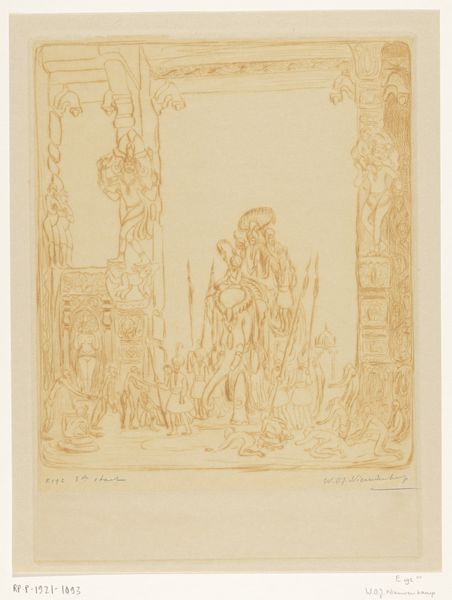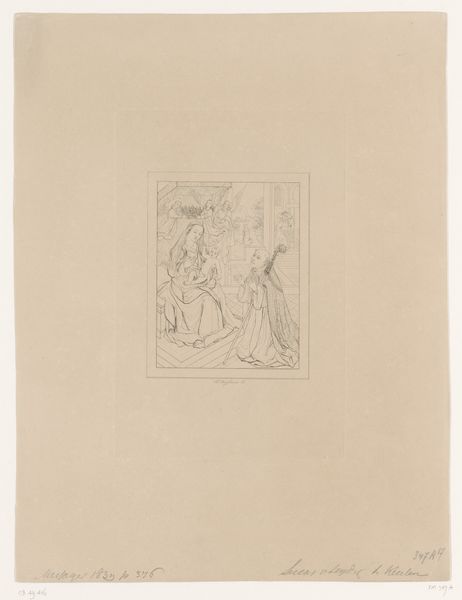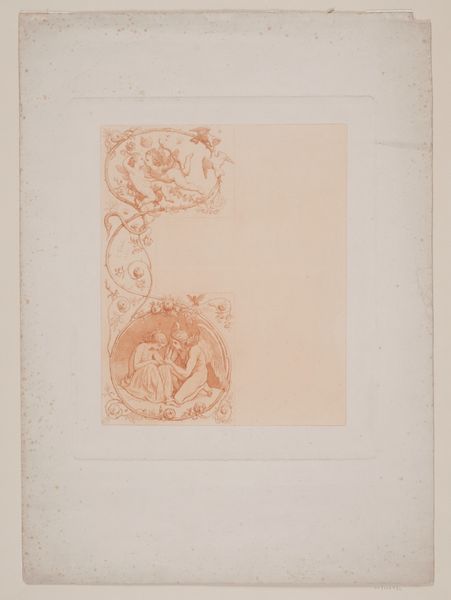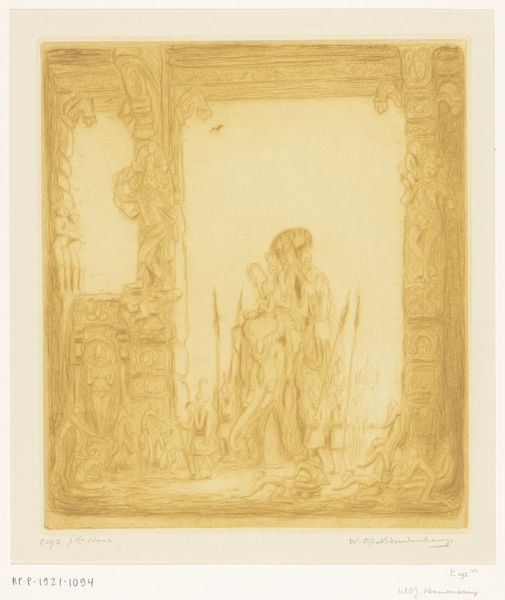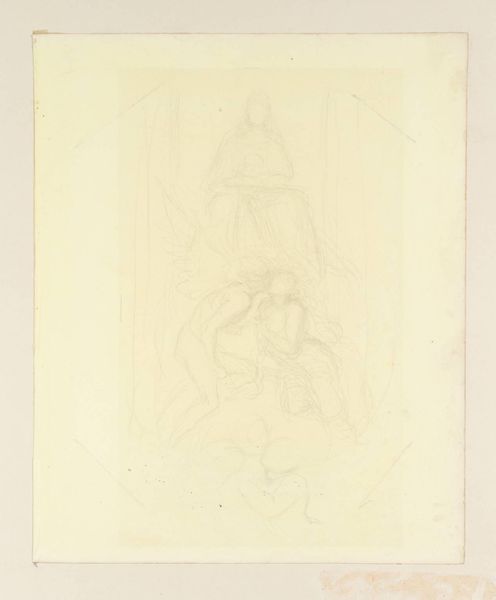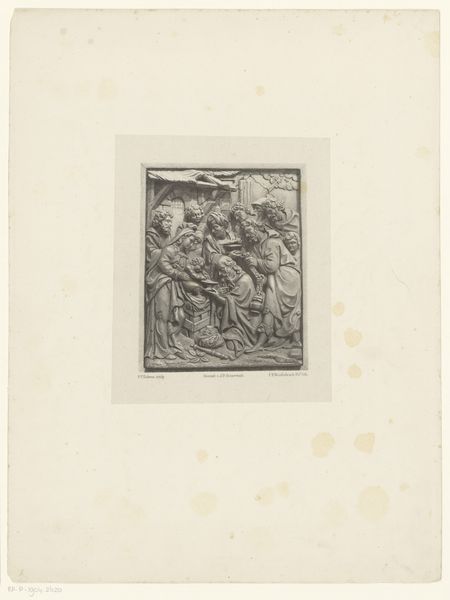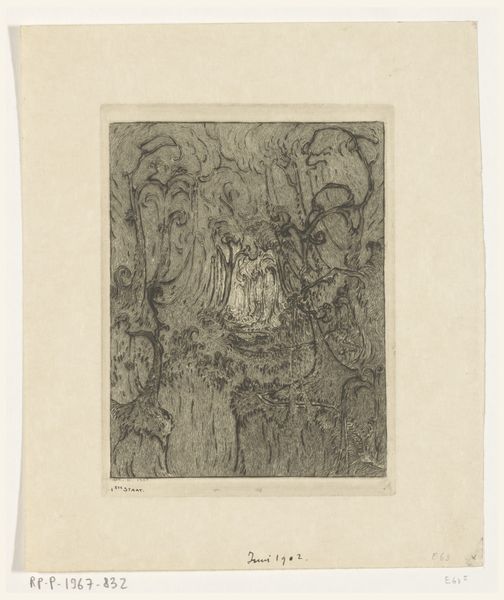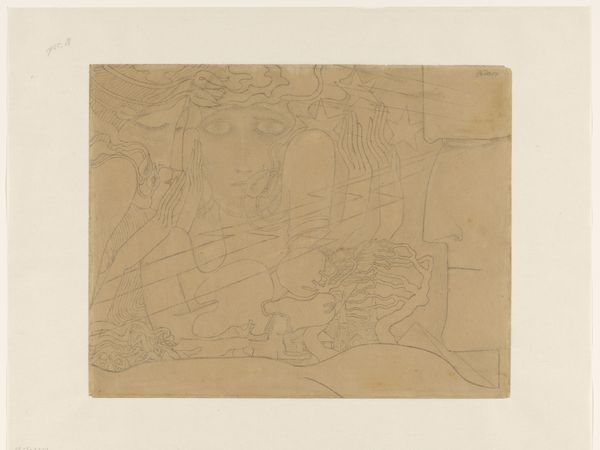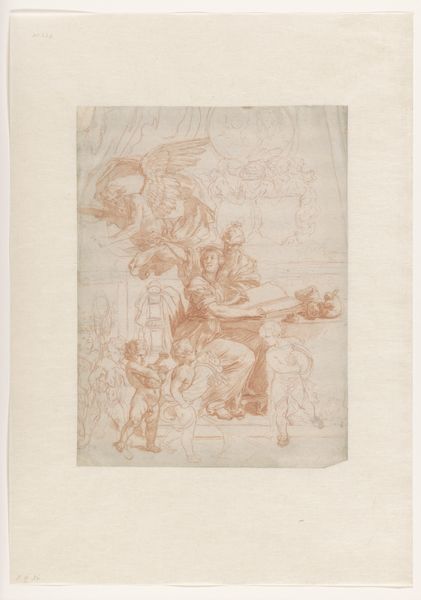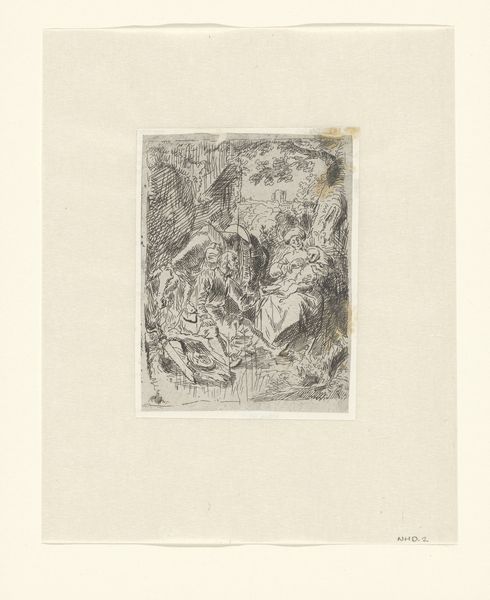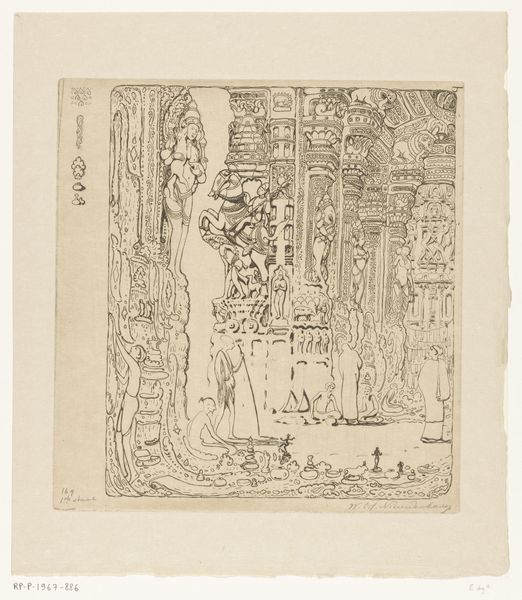
drawing, print, linocut, etching
#
drawing
# print
#
linocut
#
etching
#
asian-art
#
etching
#
figuration
#
linocut print
#
line
#
watercolour illustration
Dimensions: height 303 mm, width 222 mm
Copyright: Rijks Museum: Open Domain
Curator: Wijnand Otto Jan Nieuwenkamp created this intriguing piece, Figuren op een olifant onder een poort in Madurai, around 1917, using etching and linocut techniques. Editor: It’s dreamy, isn’t it? Like a memory seen through a veil. The light tone gives it an ethereal quality. It also feels a little unsteady – almost like it is about to topple. Curator: That lightness likely stems from the etching process. Nieuwenkamp would have used acid to bite into the metal plate, allowing for very fine, detailed lines. The linocut elements perhaps add that textural contrast. Editor: Textural for sure – the whole composition has this roughhewn, earthy feeling. What do we know about the social or artistic context of this work? Why this gateway in Madurai? Curator: Nieuwenkamp was quite taken by Asian art and culture. His travels and studies heavily influenced his artmaking. I suspect that this portrayal considers how local craft traditions inform monumental art, as presented here, challenging Western perspectives about artmaking and its value. Editor: I love how the artist includes these smaller figures to give the work a sense of grand scale. They emphasize just how imposing and architecturally impressive this structure is – even while using such gentle, simple lines. I think it's marvelous, the detail he suggests versus what's actually there. What can you say of the relationship to material in the etching? Curator: His mark-making really brings attention to the materiality of this print: it’s made, it’s etched, and that the act of production carries its own kind of symbolic meaning that intersects, I would say, with how we, the viewers, can reflect on travel, image-making, and perhaps the artist's relationship to colonialism. Editor: A dense reading for what appears to be an unassuming sketch. It really gives so much for those of us willing to reflect, I think. Thanks. Curator: Indeed. It calls for deep looking and thought on many levels, so that labor can yield understanding.
Comments
No comments
Be the first to comment and join the conversation on the ultimate creative platform.
